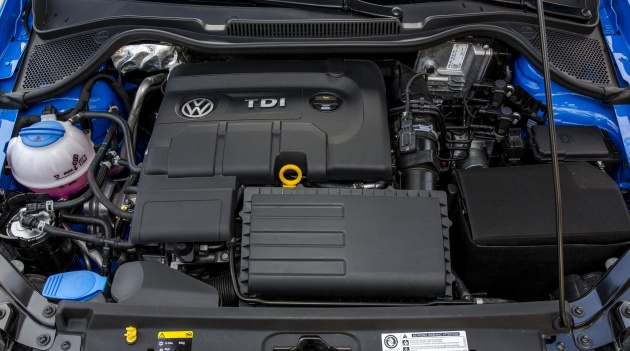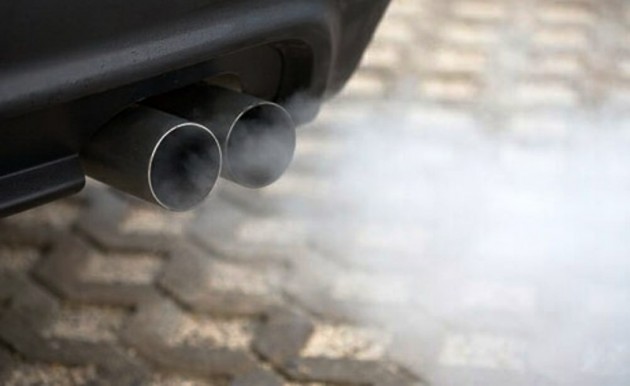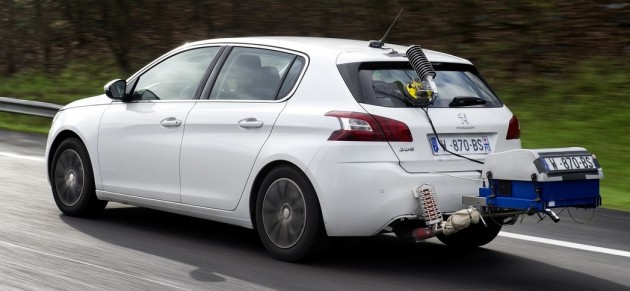It seems as though the greater industry trend of building smaller, turbocharged engines may not have been such a good thing after all, if a Reuters report is to be believed. Real-world emissions testing, brought on as a result of the Volkswagen diesel emissions cheating scandal, is forcing carmakers to return to larger engines, as these tests expose the downsides of the downsized mills.
Among companies already planning to ditch their smallest engines – both petrol and diesel – over the next three years are Renault, General Motors and VW, said industry sources, with other manufacturers expected to follow suit. The move will wreak havoc on development budgets already pushed to the limit due to a rush in building hybrids and electric vehicles.
“The techniques we’ve used to reduce engine capacities will no longer allow us to meet emissions standards,” said Renault-Nissan Alliance powertrain head Alain Raposo. “We’re reaching the limits of downsizing.”
Tiny engines, turbocharged to make up for lost power, have been able to slip through official lab testing done on rollers at unrealistic temperatures and speeds. The report claims that carmakers, regulators and environment advocates have all known that the mills spew way more carbon dioxide and nitrogen oxide (NOx) emissions in the real world, but there hasn’t been anything done to redress it.
Starting from 2017, however, new models will be required to undergo realistic on-the-road testing for NOx emissions, with compliance being mandatory for all cars come 2019. A new global test standard will see fuel consumption and carbon dioxide emissions follow suit two years later.
Independent testing conducted in the wake of the VW “dieselgate” expose the downside of small engines, which, at higher loads than current lab tests, far exceed legal emissions levels. Turbodiesels create up to 15 times more NOx emissions than the legal limit due to heat from the turbochargers, while their petrol equivalents are less fuel efficient and produce fine particles and carbon monoxide.
Sources say that while carmakers have been mum about the scale of the problem or how they plan to solve it, they are already making a bid for larger engines. For example, GM will ditch its 1.2 litre diesel when it moves to a new engine architecture in 2019, with the smallest engine becoming 25% to 30% larger. VW is also replacing its 1.4 litre three-pot oil-burner with a 1.6 litre four-pot destined for cars like the Polo.
Meanwhile, Renault is making its 1.6 litre R9M diesel – which replaced the 1.9 litre mill in 2011 – 10% larger. Its 0.9 litre H4Bt petrol engine, on the other hand, injects excess fuel to prevent overheating in real-world conditions, causing a high level of unburnt hydrocarbons, fine particles and carbon monoxide emissions. Sources say that cleaning these up with exhaust technology is too expensive, so its successor will be larger and develop more torque at the lower rev ranges to stay cool.
That’s not all. Fiat, Renault and Opel have the worst real-world NOx emissions among Euro 6 diesels, according to test data from several countries – and now “face the biggest burden” of expenditure to become compliant, warned brokerage firm Evercore ISI last month.
Mercedes-Benz head of research and development Thomas Weber said that the result was inevitable. “It becomes apparent that a small engine is not an advantage,” he told the news agency. “That’s why we didn’t jump on the three-cylinder engine trend.”
These tests could mark an end to diesel engines smaller than 1.5 litres and petrol mills below 1.2, said analysts. As such, meeting carbon dioxide emissions goals become much tougher, so hybrid and electric vehicles can’t come soon enough. Stung by the scandal, VW has set ambitious targets to sell two to three million EVs a year by 2025, about a quarter of its current production.
“You can’t downsize beyond a certain point, so the focus is shifting to a combination of solutions,” said Frost & Sullivan analyst Sudeep Kaippalli, who predicted an increase in the number of hybrids. In future, he said, “downsizing will mean you take a smaller engine and add an electric motor to it.”
Looking to sell your car? Sell it with Carro.














AI-generated Summary ✨
Comments largely criticize the downsizing trend, arguing it’s driven by tax advantages rather than genuine environmental benefits, and often results in underpowered vehicles that rely heavily on turbo activation, which increases fuel consumption in city traffic. Many highlight that larger naturally aspirated engines like Mazda’s Skyactiv demonstrate longer reliability and better real-world efficiency, even with bigger displacements. Critics also note that turbocharged small engines often underperform in stop-and-go traffic, negating claimed fuel savings, and mention the higher maintenance costs and complexity associated with turbo systems. Overall, there’s consensus that bigger, well-engineered NA engines are more reliable, efficient, and honest in their claims, with skepticism about the true environmental impact or savings from the current downsizing craze driven by regulatory and tax motives.